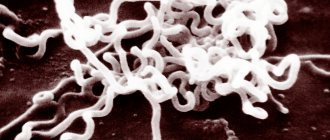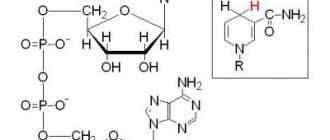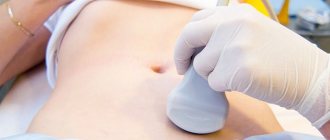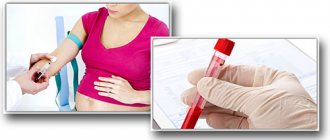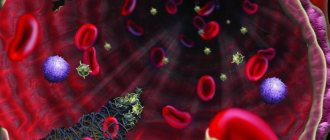Home — For the public
- Map of medical organizations
- Vaccination
- Clinical examination
- Fluorography
- Addresses and opening hours of clinics
- Emergency rooms
- Oncology
- Where to take an HIV test
- Healthy child's office
- Services
- Prevention of CVD
- Disease Prevention
- World Patient Safety Day
- Newspaper "Medical News"
- specialist
- School of Health
— Disease prevention
- HIV infection
- All about vaccination
- All about proper nutrition
- Hepatitis
- Flu
- Dementia
- Schoolchildren's health
- Tick-borne encephalitis
- Whooping cough
- Measles
- Legionellosis
- Meningococcal infection
- Oncology
- Acute intestinal infection (AI)
- Pediculosis
- First aid
- Pneumococcal infection
- Pneumonia
- Prevention of rabies
- Dependency Prevention
- Rotavirus infection
- Diabetes
- Cardiovascular diseases
- Injuries
- Tuberculosis
- Tularemia
- Physical activity - a healthy future
- Chronic obstructive pulmonary disease
- Exotic infections
- Ecology
- Why is swimming in ponds dangerous?
- HIV infection
- Express help
- HIV is not a death sentence
- HIV prevention
- Interesting about HIV
— Prevention of HIV infection — Preparation for an HIV test
In order for the results of HIV testing to be reliable, proper preparation for the test is important. Sometimes the analysis shows the presence of a virus, although in fact there is none. This is called a false positive. The number of false results depends on the accuracy of the testing method used. For the immunochromatographic method (test strip), the number of false positive results reaches 5%, for ELISA - less than 1%. Immunoblot is performed only to confirm ELISA or when ELISA results are questionable.
With improper preparation, the number of false positive results increases. To avoid an erroneous result, it is important to know how to prepare for an HIV test.
Procedure for donating blood for HIV testing
Collecting blood for an HIV test is no different from usual. Venous blood is required for the study. The skin is treated with an antiseptic, then the nurse inserts a needle into the vein. Typically, blood is drawn from a vein in the cubital fossa, or less commonly from a vein in the forearm. In both cases it doesn't hurt.
In modern systems, a syringe with a piston is not needed: blood flows from the needle directly into the test tube due to vacuum. After the required amount of blood has been collected, the nurse removes the tube and removes the needle from the vein. The area is covered with a sterile bandage. This concludes the procedure for donating blood for analysis.
Blood test methods and interpretation of results
The human immunodeficiency virus cannot be detected by routine blood tests, clinical or biochemical. Modern diagnostics include techniques for isolating viral RNA, as well as determining natural antibodies produced by the body in response to infection. However, some indicators during a general examination may become a reason for a more detailed examination. Thus, HIV multiplication leads to a decrease in the number of white blood cells - protective cells of the immune system.
REFERENCE! There are rapid tests that can also test your blood for HIV. However, the results of such a study may be unreliable and will not replace a full diagnosis in the laboratory.
Qualitative analyzes
A qualitative blood test for HIV assumes a positive or negative result. During the analysis, it is possible to detect the presence or confirm the absence of a virus in the material, but not to calculate its quantity. Such methods are suitable for routine diagnosis and if HIV is suspected. They are based on serological reactions - those carried out with blood serum. There are two main ways to determine HIV infection, and the test will show reliable results within a few weeks after infection.
Also read:Rules for donating blood
- ELISA (enzyme-linked immunosorbent assay) is the simplest way to diagnose HIV. It involves combining blood with reagents containing viral antigens. If a person has developed antibodies, they will enter into an immune reaction and destroy the virus. The formation of antibodies indicates the presence of the virus in the body: they are formed several weeks after infection, and in some cases, several months later. The accuracy of blood testing using the ELISA method is up to 98%.
- Immunoblotting is a more reliable and expensive analysis. The need for it arises only if the ELISA shows a positive result at least twice. The essence of this research method is an enzyme-linked immunosorbent assay with preliminary exposure to viruses by electrophoresis. This is how viral antigens are separated by molecular weight. The accuracy of the study reaches 99.7%.
The results of the ELISA can be positive, negative or questionable. When receiving the latter, additional research will be required in the same way. Next, you can perform an immunoblotting procedure if there is a suspicion of infection. After the reaction is completed, it is necessary to examine test strips containing different types of antigens (gp41, gp120, gp160). If the blood has reacted with all types of antigens, the presence of HIV can be considered established. In other cases, an additional reaction will be required.
To test for HIV, 5 ml of blood is enough, but you need to properly prepare for donating it
Quantitative analyzes
Quantitative methods allow not only to detect HIV in the blood, but also to calculate the concentration of the virus. The study is carried out using the PCR (polymerase chain reaction) method and is suitable for both primary diagnosis and monitoring the effectiveness of treatment. For this test, blood is also drawn from a vein, then it is placed in a special analyzer. The reaction is to look not for antibodies to the infection, but for viral RNA. The method is more informative and accurate because it shows the degree of infection of a person. It is used, among other things, for early diagnosis after suspected infection, before starting and during antiviral therapy, as well as during pregnancy, to determine the need for cesarean section.
The results of the analysis may be as follows:
- 20 copies/ml – normal (no virus);
- less than 20 copies/ml – the amount of infection is so small that it cannot be detected by the analyzer;
- more than 20 copies – the virus is present in the presented quantity (can range from 20 to 106 or more than 106).
REFERENCE! The accuracy of test results can be affected by various factors, including the quality of equipment and methods of sterilization of instruments, the qualifications of personnel and the patient's compliance with all rules when donating blood.
Causes of false positive results
ELISA tests the antibodies produced in the body in response to HIV antigens.
- The sensitivity of the method - the ability to detect an antigen if it is present - is up to 99.5%
- The specificity of the method is the ability to determine exactly the desired antigen - up to 99.9%.
In some situations, the rate of false positive results increases. This happens if the body has antibodies similar to antibodies to HIV. This can happen:
- in the presence of autoimmune diseases;
- in conditions after organ transplantation;
- for acute viral infections;
- during pregnancy;
- after vaccination against viral infections;
- after participating in HIV vaccine trials.
Also, technical errors when performing analysis in the laboratory or non-compliance with recommendations for preparing for testing can lead to a false positive result. Therefore, every positive HIV test result requires additional testing!
Classification
Currently, there are several ways to carry out such a diagnostic procedure as a clinical blood test to detect HIV.
Qualitative research
Screening using enzyme immunoassay methods (ELISA), which detects antibodies to HIV-1 and HIV-2 antigens. Pathological particles may appear as early as 2 weeks after infection, but more often they form after about a month. Then their number in the blood gradually increases. It is noteworthy that even with their presence, clinical manifestations may be absent from 2 to 10 years.
The test is not always accurate and in some cases gives a false positive result. It is necessary to re-test in 2-3 weeks.
This category includes another laboratory test that can show HIV. We are talking about a verification study using the immunoblot technique - it is carried out in situations where the previous sample gave a positive result twice. This diagnostic process includes ELISA in combination with electrophoresis, which gives the most accurate result.
Quantitative Research
The concentration of virus RNA in blood plasma is assessed using PCR tests. The indication for implementation is an increased risk of infection, control over therapy.
It is noteworthy that such a blood test for HIV is mandatory for babies born from an infected mother. If positive values are obtained 2 times, this indicates that the baby is infected.
Preparing for an HIV test
The results of the study largely depend on proper preparation for it. Knowing what you can and cannot do before testing will help improve the reliability of your results and avoid the hassle of repeat testing.
Is it possible to eat before an HIV test?
Many people, after a visit to the laboratory, go to work or run errands without having the opportunity to have breakfast after drawing blood. Therefore, the most common question to ask a doctor before a test is: is it possible to eat before an HIV test? The fact is that after eating, nutrients are absorbed in the small intestine and change the composition of the blood. Fats absorbed from food make the whey cloudy. This situation is called chylosis. This makes working with serum much more difficult. Therefore, it is necessary to refuse fatty foods the evening before the test - a light dinner with a low fat content is possible. Eating also changes hormone levels, which indirectly affects the result. Therefore, you need to take the test after 8-14 hours of complete fasting. You can drink clean water as usual. After blood collection, you can eat immediately.
The influence of smoking on the reliability of analysis results
Smoking affects the synthesis of stress hormones and changes the level of certain substances in the body. All this indirectly affects the research. Therefore, you should not smoke before the analysis for at least an hour, preferably 8 hours or longer.
Drinking alcohol before an HIV test
Alcohol causes changes in metabolism, both immediate and delayed. Therefore, the consumption of alcohol and drinks that contain it should be stopped at least 3 days before the test.
Analysis during a viral infection
During acute infection with any virus, for example, influenza or ARVI, the body synthesizes antibodies to it. If testing is performed at this time, antibodies against a harmless virus may be recognized as antibodies against HIV. Therefore, testing to detect HIV antibodies is not recommended during the period of viral load.
What else can affect the results of an HIV test?
Stress, overwork, poor nutrition affect the synthesis of cortisol and other hormones, which can distort the result. Therefore, before testing for HIV, it is recommended to reduce the influence of these factors. Increased physical activity also causes the synthesis of stress hormones, so it is recommended to exclude sports on the eve of the study.
Indications for analysis
It is recommended for all people to donate blood for HIV, regardless of gender and age. This is due to the long incubation period (up to 6 months or more) and the high ability of the infection to spread. Some patients may not know about their diagnosis for many years. Today, the practice of regularly donating blood for HIV and other viral diseases (hepatitis, herpes and others) is becoming popular. To do this, it is enough to go to a public hospital or a private laboratory once a year and donate one portion of blood for all tests.
The immunodeficiency virus is present in human biological fluids and is transmitted with them. You can become infected at any age, with the most common method being unprotected sexual contact. And the infection can also spread directly through blood: through transfusion, contact with unsterile instruments, syringes. The vertical route is also known, when the virus is transmitted from mother to fetus during pregnancy. HIV tests can be carried out without indication, but there are several categories of people for whom they are especially recommended. These include:
- women during pregnancy and when planning it;
- medical personnel, laboratory staff;
- representatives of some professions (armed forces, food industry workers, teachers);
- donors.
The immunodeficiency virus goes through several successive stages of development. At the first stage (up to 3–6 months), it does not manifest itself clinically, but the person is already a source of infection. Next, the concentration of the virus in the blood increases sharply, and this condition can last for several weeks. In some cases, symptoms similar to those of a cold are observed (fever, weakness, headache), but they are nonspecific. This is followed by a long asymptomatic period when the person’s immune system fights the disease. Changes in health, including constant weakness and headaches, frequent infectious diseases, disruption of the digestive tract and sudden weight loss, may also be grounds for testing your blood for HIV.
CONCLUSION! Clinical signs similar to those of a cold may signal the development of HIV. There is no need to donate blood every time your temperature rises: it is enough to undergo examinations once a year, if there are no additional indications.
Fear of HIV testing: how to prepare mentally
The modern world interprets new conditions of our life. The emergence of HIV infection poses questions to a person that can be uncomfortable or scary to answer. But in general, today every person should know their HIV status.
Someone may ask: “Own to whom?” Doctor, boss….?” First of all, for yourself! Understanding about your health is important, being healthy is great. But HIV infection, alas, is a reality! And when a person comes into contact with information on this topic, he experiences different feelings.
This is fear when episodes of life are immediately remembered... And panic begins: “What if, suddenly, I became infected?” Someone will say with confidence: “This cannot happen to me! I'm always lucky".
We always have a choice. And after thinking, every person should understand that the safety of his life, first of all, depends on him, that going and getting tested for HIV infection is the act of an adult. Knowing your HIV status is normal and important.
It's normal to feel nervous before a test. Panic can make you refuse to go to the doctor due to fear of the result, especially if the day before there was a risk of contracting HIV. In such a situation, it is important to understand that it is better to get checked as early as possible and be calm for the health of your and your loved ones. Even if the result is positive, timely detection of the disease and the measures taken allow you to live a full life.
Take an HIV test and sleep well!
At any stage of HIV diagnosis, support is very important for a person. Lack of awareness about the problem can lead to poor decisions. If a person cannot get face-to-face advice, helpline specialists can call the number to help. The phone is available on weekdays, from 9 a.m. to 8 p.m. Help is provided anonymously.
HIV infection and AIDS
An AIDS test must be taken when registering with an antenatal clinic, before surgery and before donating blood for donation. It is recommended to donate through direct contact with infected blood and when using non-sterile needles for infections.
A blood test for AIDS takes no more than 5 minutes. After taking venous blood, the collection site is treated with a disinfectant and sealed with a bandage. The test is carried out on an empty stomach, so after it it is recommended to drink sweet tea and eat a piece of chocolate.
Tests for HIV and AIDS can be false positive and false negative. Among the factors that hinder obtaining reliable results:
- infectious diseases,
- equipment malfunction,
- non-compliance with the rules of preparing for the test,
- error when reporting results (“human” factor),
- pregnancy.
The likelihood of getting a false AIDS blood test result depends on how much time has passed since potential infection.
Whatever AIDS test results you receive, the main thing is to remain calm. Remember that living a full life with an infection is not a myth, but a reality!
What is HIV
HIV infection is a viral disease of the human immune system. It progresses slowly and gradually leads to a weakening of a person’s immunity to infections, tumors and other diseases. If this is not prevented, the virus can reduce a person’s immunity to nothing. The virus gradually destroys the cells of the human immune system. Thus, the patient’s body is open to all diseases, including those to which a healthy person is completely immune. This situation leads to the death of the patient not from the virus itself, but from some disease that the immune system cannot cope with. The final stage of HIV is called AIDS. This diagnosis is made several years after infection, when a person is found to have developed one or more serious diseases.
Myths about how the disease is transmitted
How is the infection not transmitted?
- through tears, saliva, sweat;
- with hugs, handshakes;
- when kissing;
- when coughing or sneezing;
- in the gym, swimming pool, public places;
- through shared utensils;
- when using the toilet and shower;
- through insect bites, animal scratches.
HIV is very unstable, that is, it is viable only in the human body, but will quickly die if released into the environment.
Ready times for tests
The time it takes to receive HIV test results depends on the flow of patients in the clinic and the capacity of the laboratory. As a rule, public medical institutions process results within 2-3 weeks .
If you need to get results urgently , it is recommended to take the test in a private clinic, where the report will be ready in a couple of days. A certificate with the results of an HIV test is issued in person upon presentation of identification documents. As a rule, the results are reported in a separate room in order to provide psychological assistance and explanatory consultation if necessary.
Basic rules of preparation
Regardless of the purpose for which biological fluid is submitted for examination, it is best to do this on an empty stomach. You need to come to the laboratory as early as possible, and at home you should skip breakfast. Blood tests for AIDS and hepatitis are performed in any hospital, and the laboratory is supposed to be open from 8 to 12 am.
In the evening before the test, it is better to eat light food so that it has time to digest. And the following is also recommended:
- Before blood is drawn, the person must sit quietly for 15 minutes.
- For about half an hour, you should eliminate any physical activity.
- It is necessary to be in a calm emotional state.
- If possible, you should stop taking medications.
- You do not need to drink alcoholic beverages for three days before the test.
If a blood test is planned for RW, HIV, hepatitis, then it is recommended to eat a limited menu for several days before donating blood. Any citrus fruits, fatty, hot and spicy foods should be excluded from the diet. And you should also not eat foods with a high content of orange pigment to avoid errors in the analysis.
How do men get tested for HPV?
There are some peculiarities in the diagnosis of human papillomavirus infection.
The material for the study can be a smear from the urethra or a skin scraping.
It is taken from those areas where there are anogenital warts.
Viruses are always found inside cells.
Therefore, their number must be sufficient to conduct a PCR test.
For diagnosis, only molecular biological methods are used.
Microscopy does not give a reliable result.
Cell culture is carried out only for scientific purposes, but not in clinical practice.
Urine, ejaculate or other material is not used to diagnose human papillomavirus infection.
Only swabs are taken.
The purpose of the study is not so much the fact of determining HPV in the body, but rather establishing the type of virus.
The prognosis of the disease and the risk of malignant degeneration of papillomas depend on it.
Therefore, the type of HPV affects treatment tactics.
HIV tests
Currently, the World Health Organization is committed to doing everything possible to diagnose HIV infection in a timely manner. There are several ways to identify the disease. Even a complete blood count may show an abnormal number of lymphocytes, which will require further diagnosis.
Promotions are often held to allow people to take a rapid HIV test. During this test, blood is taken from a finger, and the result is given in just a few minutes. However, it must be taken into account that in this case, for a reliable result, it is necessary that at least 10-12 weeks have passed since the infection. During this time, a sufficient amount of antibodies will accumulate in the blood that can be detected.
A more thorough analysis is carried out using two possible methods:
- Enzyme-linked immunosorbent assay (ELISA)
During the analysis, the collected blood is mixed in several steps with a protein containing the HIV virus.
- Immune blotting
An improved and expensive method of analysis based on ELISA. In general, it is carried out in the same way as enzyme immunoassay. The only difference is that the virus protein is separated by electrophoresis before adding.
Both methods have a fairly high sensitivity to antibodies: 98% and 99.7%, respectively.
The time frame for receiving test results depends on where the person is tested. Private clinics are ready to provide results within 24 hours. Municipal hospitals usually collect batches to send biomaterial to laboratories. Therefore, results have to be expected within a week.
In countries with a high risk of HIV spread, self-diagnosis programs for the presence of antibodies in saliva or urine are used. It cannot be said that this type of survey is highly accurate, but in disadvantaged areas it is necessary.
How to test for ureaplasma in men
Ureaplasmosis is diagnosed in a similar way.
The only difference is that smears from men are taken only from the urethra.
Urogenital ureaplasmas never parasitize the mouth or rectum.
They are adapted only for living in the urogenital tract.
In addition to PCR, culture can be used to detect ureaplasmosis.
It has higher sensitivity compared to culture-based diagnosis of chlamydia.
Clinic
At first glance, the most convenient way to get tested is to go to the clinic at your place of residence: you know the doctors nearby. At the reception window I ask where I can get tested for HIV. The nurse is a little lost and asks for a referral from the GP. I explain that there is no direction, I just decided to get checked myself. The response was stormy surprise: “Why do you need it?!” Even knowing that this is just an editorial task, I feel awkward: answering such questions when there is a long line behind you is not very pleasant. Without a referral, the analysis is paid, and the cost must be clarified at the checkout. In the latter, meanwhile, they don’t know the prices and send them to the therapist’s office.
The doctor treats you like family, with a wide smile—customer-centricity has reached municipal clinics. But as soon as the reason for the visit was voiced, the doctor’s face changed: “We have a paid test - 330 rubles, only on an empty stomach, so come in the morning with your passport.” I’m wondering if it’s possible to do an analysis without a document, but the answer is again indignation: “What do you mean?!” No, we’re driving everything in, it’s impossible without him.” I refused not because I was afraid to show a bad photo. I can get the results at the clinic in a week: the material is sent from here to the AIDS center or other nearest public or private laboratory. Options are possible: if, for example, you are about to undergo surgery, laboratory assistants can make a note of urgency on the papers in order to force things.
Treatment of people infected with HIV. What is it like now?
Unfortunately, a vaccine has not yet been found that helps completely remove the infection from the body. Nevertheless, scientists have invented drugs that block the reproduction of the virus and suppress its activity.
Treatment with several drugs at the same time significantly reduces the level of HIV in the blood. This allows the presence of immune cells to increase.
